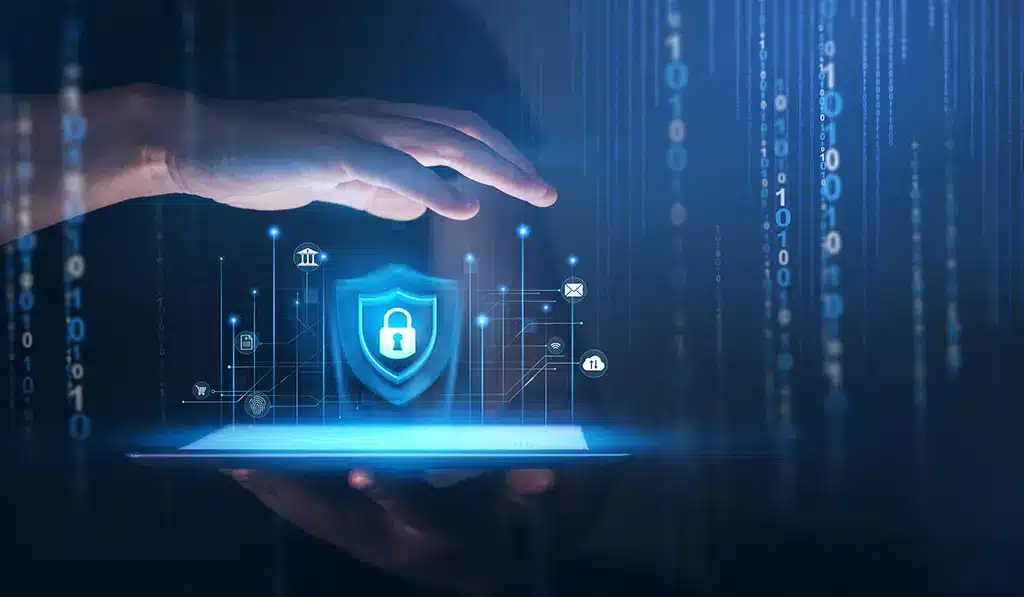The security industry is witnessing a pivotal transformation, driven by the rapid evolution of digital technologies. According to the Security Industry Association, significant “Security Megatrends” for 2024 emphasize the integration of AI and digital tools, highlighting their crucial role in shaping future security practices. This integration not only enhances security measures but also ensures adaptability in an increasingly digital world, setting the stage for a comprehensive exploration of how these technologies are reshaping the sector.
Historical Context of Security Guard Strategies
Traditional security strategies have often centered around manual patrols and direct observation, practices that are deeply rooted in the history of the security profession. However, these methods have limitations, particularly in scalability and real-time responsiveness.
In contrast, digital solutions such as automated surveillance and data analytics offer significant improvements, enabling more dynamic and proactive security measures. This shift not only reflects technological advancement but also a change in the threat landscape, where quick adaptation and technological integration become key to effective security.
The Rise of Digital Technology in Security
In the current security environment, artificial intelligence (AI), the Internet of Things (IoT), and big data play transformative roles. These technologies enhance real-time monitoring and incident response, significantly improving the efficiency and accuracy of security operations.
For instance, AI can analyze vast amounts of video footage much faster than human operators, detecting anomalies that might go unnoticed. This capability not only boosts security but also helps in resource allocation, ensuring that human guards are deployed where most needed.
Integration Strategies
Effectively integrating modern technology into traditional security guard strategies is a multi-faceted process that requires careful consideration of various operational, training, and communication aspects.
Operational Integration
The first step involves assessing the specific security needs of an organization and then selecting the appropriate technologies that enhance these capabilities. This could range from real-time surveillance systems to advanced data analytics for incident prediction. Once selected, the technology must be integrated seamlessly with existing security protocols to create a unified security strategy. This might include setting up integrated control rooms that combine digital feeds and traditional surveillance, allowing for comprehensive monitoring and quicker response to incidents.
Training and Adaptation
For technology to be effective, security personnel must be proficient in both its use and its implications. This involves regular, detailed training sessions that not only cover the operational use of the technology but also its strategic benefits and potential pitfalls. Simulation-based training can be particularly effective, providing hands-on experience in a controlled environment. Moreover, continuous learning modules should be developed to keep security teams updated on the latest technological advancements and techniques.
Enhanced Communication System
Integrating technology also means enhancing the communication capabilities within the security team and with external stakeholders. Advanced communication tools like encrypted digital communication platforms can facilitate instantaneous sharing of information across various levels of the organization. This ensures that all team members are informed and can make coordinated decisions quickly. Additionally, integrating data-sharing protocols with local law enforcement and other relevant bodies can enhance the overall security framework, allowing for a more cohesive response during security incidents.
Examples
Several case studies highlight the benefits of technological integration in security operations. For example, some security firms have successfully implemented drone technology to patrol large areas, providing a bird’s-eye view that is impossible for ground patrols. These drones, equipped with night vision and thermal imaging, can detect threats, and monitor vulnerable areas without the need for constant human presence, significantly reducing labor costs and improving coverage.
Another case involves the use of biometric technology to control access to sensitive areas, ensuring that only authorized personnel can enter, thereby enhancing security protocols. Gallagher Security shared a few more examples of modern technology integration.
Challenges and Considerations
Integrating new technologies in security operations isn’t without its complexities. Initially, the cost can be a significant barrier, not only for the purchase and installation of technology but also for the ongoing maintenance and necessary upgrades to ensure systems stay current and secure. As security systems become more technologically advanced, they also become targets for cyberattacks, which requires continuous cybersecurity measures to protect both the technology and the data it handles.
Training and Adaptation
Another major challenge is the training and adaptation required for security personnel. Integrating advanced technology with traditional methods demands that security staff are not only trained in the operational aspects of the technology but also in its ethical application and the nuances of digital security. This can be resource-intensive and requires an ongoing commitment to professional development.
Privacy
Privacy concerns represent a substantial hurdle as well. The use of surveillance tools and data collection technologies can lead to conflicts with privacy laws and civil liberties, especially if not managed with strict compliance to legal standards. This challenge extends to the need for transparency with the public and stakeholders about how data is used and protected, maintaining trust while effectively managing security risks.
Legal Ramifications
Finally, the legal landscape surrounding new security technologies is continually evolving. Security firms must stay informed about new regulations and compliance requirements, which can vary significantly by region and the type of technology deployed. Ensuring compliance involves regular audits and possibly legal consultations, adding to the complexity and cost of technology integration.
These challenges underscore the necessity for a thoughtful approach to integrating technology in security practices, balancing the benefits of enhanced capabilities with the management of potential risks and ethical considerations.
Best Practices for Implementation
1) Selecting the Right Technologies
The process of integrating technology into security operations should start with a thorough needs assessment to identify the specific requirements of the organization. This assessment should guide the selection of technologies that not only align with the operational goals but also fit the budget and infrastructure of the organization. It is crucial to choose scalable solutions that can grow with the organization and adapt to emerging security challenges.
2) Ensuring Compliance and Ethical Considerations
Compliance with legal standards is critical when implementing new technologies in security. Organizations must navigate the complex landscape of privacy laws, which can vary significantly between regions. Consulting with legal experts to ensure that all technologies and their applications comply with relevant laws and ethical standards is essential. This compliance protects the organization from legal repercussions and helps maintain public trust and credibility.
3) Ongoing Training and Support
Effective implementation of technology requires ongoing training and support for all security personnel like that from International Foundation for Protection Officers. This ensures that staff are not only familiar with how to operate new technologies but are also aware of the strategic reasons behind their use. Training programs should include regular updates to keep pace with technological advancements and evolving security threats. Additionally, providing continuous technical support can help resolve any operational issues quickly, minimizing downtime and maintaining security effectiveness.
Modernizing Security: Integrating Tech for Enhanced Protection
The integration of modern technology into traditional security strategies is essential in addressing the complex and evolving threats in today’s security landscape.
As we have explored, the successful adoption of modern technologies hinges on careful selection, strict adherence to legal standards, and ongoing training and support for security personnel.
For security firms ready to make this transition, the next step is to conduct a comprehensive assessment of their current operations, identify areas where technological enhancements can yield significant improvements, and commit to a continuous adaptation strategy.
By embracing these best practices, organizations can enhance their security effectiveness and ensure they are well-equipped to meet future challenges.
Make sure you’re fully covered with the right Security Guard Insurance Policy. Call El Dorado Insurance today for premium protection at an affordable price – 1-800-221-3386






